

Leonbattista Alberti
completed 1470
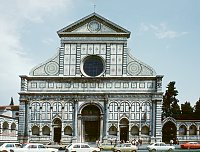
|
 |
Commissioned by the Rucellai family to redesign the facade of the existing church, Alberti devised a rational and unified front. Alberti's design has various geometrical relationships; for example, the height to the top of the pediment is equal to the width and the upper temple with its pediment is one-fourth the size of the main square. |
| Alberti added a mezzanine between the lower story and the narrow central temple form at the top. It serves as an attic for the lower story and a plinth for the upper. The green and white marble inlays (borrowed from San Miniato al Monte) are repeated in banding used on the corner pilasters and those on the temple top thus adding to the visual unity of the church. | 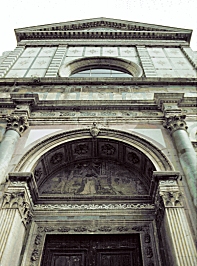 |
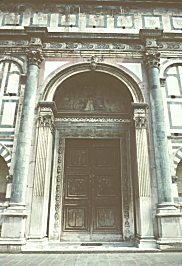 |
| The extant church had doors and six sarcophagi with pointed arches on the lower level which Alberti enclosed within a blind arcade. In addition, he added volutes to frame the second story thus uniting the narrow top with the lower story, the width of which was determined by the side aisles. This solution was widely copied in Renaissance and Baroque architecture. | 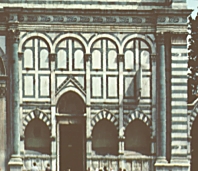 |
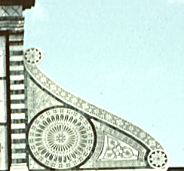 |
 Click here to return to places index.
Click here to return to places index.
 Click here to return to index of artists and architects.
Click here to return to index of artists and architects.
